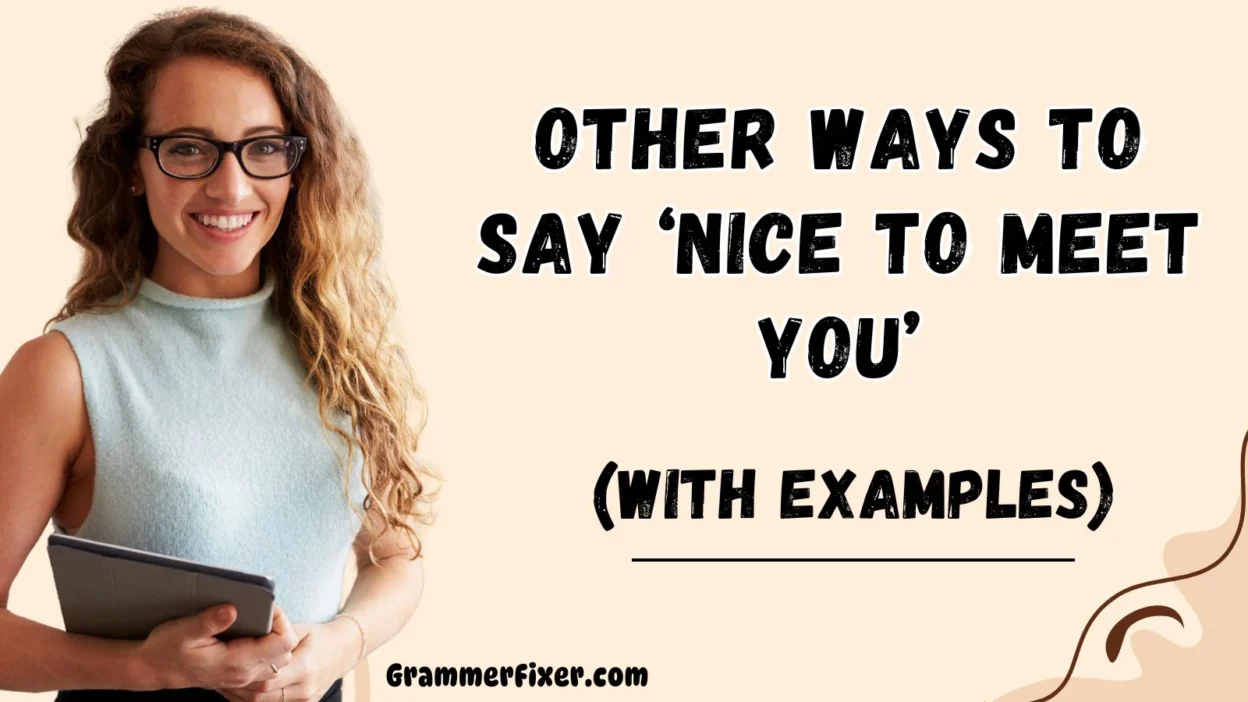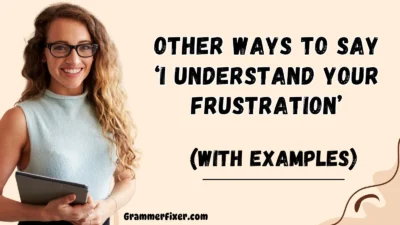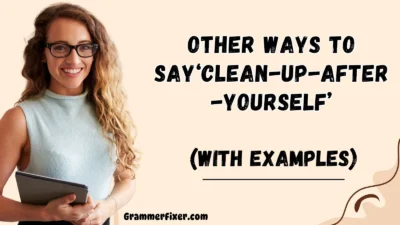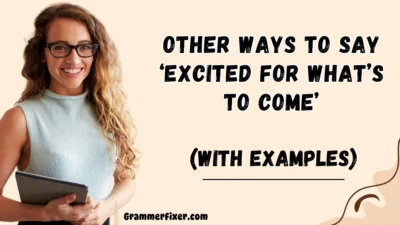Finding the right words when you first meet someone—whether face-to-face, virtually, or in writing—can set the tone for the entire relationship. While “Nice to meet you” is a classic pleasantry, it can sometimes feel repetitive or cliché. Choosing warm, thoughtful, and personalized alternatives not only makes your greeting more memorable but also shows care, respect, and authentic interest in the other person.
This guide will give you 30 versatile ways to say “Nice to meet you” in professional, social, and digital settings—each with meanings, examples, and tips for the best tone.
What Does “Nice to Meet You” Mean?
At its core, “Nice to meet you” is an expression used to acknowledge and appreciate the first encounter with someone.
It’s a friendly, polite, and positive statement signaling that you are pleased about the interaction.
Is It Professional/Polite to Say “Nice to Meet You”?
Yes—when used in the right context and tone, it is polite, appropriate, and professional.
However, in certain formal settings or when addressing high-standing professionals (e.g., your boss, a client, or a recruiter), you might choose a more refined synonym to leave a stronger impression.
Advantages or Disadvantages of Saying “Nice to Meet You”
Advantages:
- Universally understood and easy to remember.
- Works well in both casual and formal interactions.
- Creates an instant connection.
Disadvantages:
- Can sound overused or generic.
- May lack personalization or warmth in high-stakes scenarios.
1. Pleased to Make Your Acquaintance
Meaning: A formal way to express that you are happy to meet someone for the first time.
Detailed Explanation: This phrase is more traditional and is often used in professional or formal introductions.
Scenario Examples:
- “Pleased to make your acquaintance, Mr. Gonzalez. I’ve heard so much about your work.”
- “It’s a pleasure—pleased to make your acquaintance.”
Best Use: Networking events, professional conferences, business introductions.
Tone: Formal, respectful, cordial.
2. It’s a Pleasure to Meet You
Meaning: A polite way to communicate genuine enjoyment in meeting someone.
Detailed Explanation: Slightly warmer than “Nice to meet you” while still professional.
Scenario Examples:
- “It’s a pleasure to meet you, Dr. Smith. I’ve been looking forward to this discussion.”
- “It’s a pleasure to meet you—I admire your achievements.”
Best Use: Job interviews, client meetings, formal introductions.
Tone: Professional, warm, gracious.
3. Glad to Finally Meet You
Meaning: Expresses happiness about meeting someone you’ve heard about or interacted with before.
Detailed Explanation: Adds a sense of anticipation fulfilled.
Scenario Examples:
- “Glad to finally meet you—I’ve been following your work online.”
- “We’ve exchanged so many emails; I’m glad to finally meet you in person.”
Best Use: Transitioning from online to in-person meetings.
Tone: Friendly, warm, personal.
4. Delighted to Meet You
Meaning: Communicates genuine joy and enthusiasm upon meeting someone.
Detailed Explanation: This phrase adds energy and warmth, ideal for both professional and friendly introductions.
Scenario Examples:
- “Delighted to meet you, Ms. Lee. I’ve admired your art for years.”
- “Delighted to meet you—I’ve heard incredible things from our mutual friends.”
Best Use: Social gatherings, creative industry networking, and high-energy professional events.
Tone: Enthusiastic, friendly, engaging.
5. Honored to Meet You
Meaning: Conveys deep respect and admiration for the person you are meeting.
Detailed Explanation: Ideal for meeting someone with high standing, influence, or recognition.
Scenario Examples:
- “I’m truly honored to meet you, Mr. Patel. Your work has been an inspiration.”
- “Honored to meet you—thank you for taking the time today.”
Best Use: Meeting respected leaders, mentors, public figures, or industry icons.
Tone: Respectful, formal, sincere.
6. Thrilled to Meet You
Meaning: Expresses excitement and eagerness.
Detailed Explanation: Great for creating an upbeat atmosphere in casual or semi-formal contexts.
Scenario Examples:
- “Thrilled to meet you—I’ve been following your journey on LinkedIn.”
- “Thrilled to meet you, and I’m excited about the opportunities we can explore together.”
Best Use: Informal networking, creative industries, collaborative projects.
Tone: Excited, energetic, friendly.
7. It’s Wonderful to Meet You
Meaning: Highlights positivity and warmth.
Detailed Explanation: More expressive than “Nice to meet you,” and perfect for creating a pleasant tone.
Scenario Examples:
- “It’s wonderful to meet you—I’ve been looking forward to this introduction.”
- “It’s wonderful to meet you, and I hope we can work together.”
Best Use: Client meetings, social events, cultural exchanges.
Tone: Warm, pleasant, friendly.
8. So Glad We Finally Connected
Meaning: Emphasizes relief and satisfaction about meeting after previous delays or online contact.
Detailed Explanation: Works well when the meeting has been planned or anticipated for some time.
Scenario Examples:
- “So glad we finally connected—your reputation precedes you.”
- “So glad we finally connected after so many scheduling attempts.”
Best Use: Moving from digital to in-person, follow-ups after multiple attempts to meet.
Tone: Appreciative, relieved, friendly.
9. Happy to Meet You
Meaning: A simple, friendly alternative.
Detailed Explanation: Keeps it light and positive, suitable for both casual and semi-formal situations.
Scenario Examples:
- “Happy to meet you, and thanks for joining our event.”
- “Happy to meet you—let’s keep in touch.”
Best Use: Informal introductions, friendly networking.
Tone: Light, pleasant, approachable.
10. I’ve Been Looking Forward to Meeting You
Meaning: Shows anticipation and genuine interest.
Detailed Explanation: Suggests that the meeting was something you valued and expected.
Scenario Examples:
- “I’ve been looking forward to meeting you, Karen—your insights in the industry are inspiring.”
- “I’ve been looking forward to meeting you ever since our email exchange.”
Best Use: Pre-arranged meetings, interviews, collaborations.
Tone: Eager, sincere, warm.
11. It’s Great to Finally Put a Face to the Name
Meaning: Commonly used when meeting someone you’ve communicated with before.
Detailed Explanation: Blends familiarity with a friendly acknowledgment.
Scenario Examples:
- “It’s great to finally put a face to the name—we’ve worked together for months.”
- “It’s great to finally put a face to the name after all those calls.”
Best Use: Workplace introductions, client meetings, online-to-offline encounters.
Tone: Friendly, relatable, conversational.
12. Lovely to Meet You
Meaning: Adds charm and friendliness to your greeting.
Detailed Explanation: Works particularly well in social settings or with clients where warmth is valued.
Scenario Examples:
- “Lovely to meet you, and I’m excited to learn more about your work.”
- “Lovely to meet you—I’ve heard so much about you from our mutual friend.”
Best Use: Social gatherings, weddings, cultural events.
Tone: Charming, pleasant, friendly.
13. Delighted We Could Meet
Meaning: Combines happiness with a sense of accomplishment in arranging the meeting.
Detailed Explanation: Implies that meeting was important and valuable to you.
Scenario Examples:
- “Delighted we could meet before the conference started.”
- “Delighted we could meet and discuss the partnership.”
Best Use: Business meetings, networking events.
Tone: Positive, professional, gracious.
14. I’m Grateful We Had This Chance to Meet
Meaning: Highlights gratitude for the opportunity.
Detailed Explanation: Adds emotional depth and appreciation to a simple introduction.
Scenario Examples:
- “I’m grateful we had this chance to meet—your advice means a lot.”
- “I’m grateful we had this chance to meet and discuss future plans.”
Best Use: Mentor meetings, significant networking moments.
Tone: Thankful, respectful, sincere.
15. It’s Been a Pleasure Meeting You
Meaning: Often used toward the end of the interaction to wrap up warmly.
Detailed Explanation: A courteous way to leave a positive impression.
Scenario Examples:
- “It’s been a pleasure meeting you, and I hope we can collaborate.”
- “It’s been a pleasure meeting you—thank you for your time.”
Best Use: Closing professional or social conversations.
Tone: Polite, gracious, professional.
16. It’s Great to Meet You in Person
Meaning: Acknowledges the transition from virtual to face-to-face interaction.
Detailed Explanation: Ideal when you’ve already communicated online or by phone.
Scenario Examples:
- “It’s great to meet you in person after all our virtual calls.”
- “It’s great to meet you in person—I appreciate you making the trip.”
Best Use: Conferences, client meetings, interviews.
Tone: Friendly, warm, authentic.
17. It’s an Honor to Meet You
Meaning: Shows deep respect, particularly for accomplished individuals.
Detailed Explanation: Often used in professional or formal contexts to convey admiration.
Scenario Examples:
- “It’s an honor to meet you, Dr. Smith. Your research has inspired my career.”
- “It’s an honor to meet you—thank you for taking the time.”
Best Use: Meeting leaders, mentors, public figures.
Tone: Formal, respectful, admiring.
18. I’ve Heard So Much About You
Meaning: Suggests familiarity and anticipation before the meeting.
Detailed Explanation: A warm icebreaker that acknowledges prior awareness.
Scenario Examples:
- “I’ve heard so much about you—it’s wonderful to finally meet.”
- “I’ve heard so much about you, and I’m excited to work together.”
Best Use: Introductions via mutual contacts, networking events.
Tone: Friendly, open, welcoming.
19. Delighted to Finally Meet in Person
Meaning: Combines enthusiasm and relief when meeting after long-distance communication.
Detailed Explanation: Suitable for relationships that began online or over the phone.
Scenario Examples:
- “Delighted to finally meet in person after our months of collaboration.”
- “Delighted to finally meet in person—you’ve been a wonderful partner remotely.”
Best Use: Remote team gatherings, hybrid workplace meetups.
Tone: Warm, appreciative, friendly.
20. It’s Nice to Finally Meet Face-to-Face
Meaning: Highlights the shift from digital to physical interaction.
Detailed Explanation: A casual yet polite acknowledgment of in-person contact.
Scenario Examples:
- “It’s nice to finally meet face-to-face—Zoom calls don’t do you justice.”
- “It’s nice to finally meet face-to-face, Max.”
Best Use: Networking events, conferences, first client visits.
Tone: Friendly, light, conversational.
21. Mucho Gusto (Spanish)
Meaning: Spanish for “Nice to meet you,” literally “Much pleasure.”
Detailed Explanation: A cultural greeting used in Spanish-speaking countries.
Scenario Examples:
- “Mucho gusto, señor. Bienvenido a la reunión.”
- “Mucho gusto—thank you for meeting today.”
Best Use: International business, cultural exchanges.
Tone: Polite, warm, culturally aware.
22. Hajimemashite (Japanese) はじめまして
Meaning: A traditional Japanese greeting used upon meeting someone for the first time.
Detailed Explanation: Used with a bow and followed by self-introduction.
Scenario Examples:
- “Hajimemashite. 私はアレックスです。”
- “Hajimemashite—it’s an honor to meet you.”
Best Use: Formal settings in Japan or Japanese cultural contexts.
Tone: Formal, respectful, traditional.
23. Enchanté / Enchantée (French)
Meaning: French for “Enchanted” or “Pleased to meet you.”
Detailed Explanation: A charming greeting used in both casual and formal contexts in French-speaking areas.
Scenario Examples:
- “Enchanté, monsieur. C’est un plaisir de vous rencontrer.”
- “Enchantée, madame. Merci pour votre accueil.”
Best Use: Cultural networking, international meetings.
Tone: Elegant, warm, refined.
24. Rènshí nǐ hěn gāoxìng (Chinese) 认识你很高兴
Meaning: Mandarin for “I’m happy to meet you.”
Detailed Explanation: A formal and polite phrase for introductions in Chinese-speaking contexts.
Scenario Examples:
- “Rènshí nǐ hěn gāoxìng, Mr. Li.”
- “Rènshí nǐ hěn gāoxìng—thank you for joining us today.”
Best Use: Chinese business meetings, cultural events.
Tone: Polite, respectful, formal.
25. Namaste (Hindi) नमस्ते
Meaning: A respectful greeting meaning “I bow to you.”
Detailed Explanation: Commonly used in India to greet someone with warmth and respect.
Scenario Examples:
- “Namaste—it’s wonderful to meet you.”
- “Namaste, and thank you for your time today.”
Best Use: Indian cultural settings, yoga communities, spiritual events.
Tone: Respectful, warm, gracious.
26. We Finally Meet
Meaning: Playfully acknowledges a long-awaited introduction.
Detailed Explanation: Works well in informal or semi-formal contexts.
Scenario Examples:
- “We finally meet—I’ve been hearing so much about you.”
- “We finally meet after so many emails!”
Best Use: Casual professional settings, social introductions.
Tone: Playful, friendly, lighthearted.
27. I’m Happy We Could Connect
Meaning: Expresses satisfaction in making a connection.
Detailed Explanation: Works for both first-time meetings and reconnecting.
Scenario Examples:
- “I’m happy we could connect and share ideas.”
- “I’m happy we could connect—this conversation has been great.”
Best Use: Networking calls, online introductions.
Tone: Warm, positive, approachable.
28. What a Pleasure Meeting You
Meaning: Adds emphasis to the delight of the encounter.
Detailed Explanation: Slightly more expressive than “It’s a pleasure.”
Scenario Examples:
- “What a pleasure meeting you—I truly enjoyed our talk.”
- “What a pleasure meeting you; let’s stay in touch.”
Best Use: Social events, professional mixers.
Tone: Polished, warm, memorable.
29. It’s Great to Make Your Acquaintance
Meaning: A formal variation of “Pleased to meet you.”
Detailed Explanation: Works well in professional introductions where formality is valued.
Scenario Examples:
- “It’s great to make your acquaintance, Ms. Thompson.”
- “It’s great to make your acquaintance and discuss future plans.”
Best Use: Business meetings, formal networking.
Tone: Professional, formal, cordial.
30. I’m Excited to Meet You
Meaning: Conveys anticipation and enthusiasm.
Detailed Explanation: Adds an energetic, forward-looking tone to the introduction.
Scenario Examples:
- “I’m excited to meet you and hear about your project.”
- “I’m excited to meet you—this collaboration has great potential.”
Best Use: Creative projects, startup networking, partnership discussions.
Tone: Energetic, optimistic, enthusiastic.
Conclusion
Your greeting is more than a formality—it’s the first impression you leave. Choosing a thoughtful alternative to “Nice to meet you” can convey warmth, respect, and authentic interest in the other person. Whether you’re greeting someone in person, virtually, or in writing, the right words help forge a connection and lay the foundation for a lasting relationship.
By using these 30 alternatives, you’ll be ready to greet others in a way that is professional, personalized, and memorable—no matter the setting.
FAQs
1. Is “Nice to meet you” still appropriate in professional settings?
Yes, “Nice to meet you” is still widely accepted in professional and casual contexts. However, using a more specific or personal alternative can help you stand out and make the interaction more memorable.
2. What can I say instead of “Nice to meet you” in an email?
In written communication, you could use “It’s a pleasure to connect,” “I’m glad we could connect,” or “I’ve been looking forward to speaking with you.” These phrases feel warm yet professional in emails.
3. How can I make my greeting feel more personal?
To make your greeting personalized, include a specific detail about the person or context—such as referencing how you were introduced, a project you’re both working on, or something you’ve admired about their work.
4. Should I use cultural variations like “Mucho gusto” or “Namaste” if I’m not from that culture?
Yes—if you are in the relevant cultural context or interacting with someone from that background, using their greeting can show respect and cultural awareness. Just be sure to use it correctly and pronounce it properly.
5. Is it okay to say “Nice to meet you” at the end of a meeting instead of the start?
Absolutely. It’s common to say “It’s been a pleasure meeting you” or “Nice to meet you” at the end of a conversation, especially if the meeting was the first interaction.



